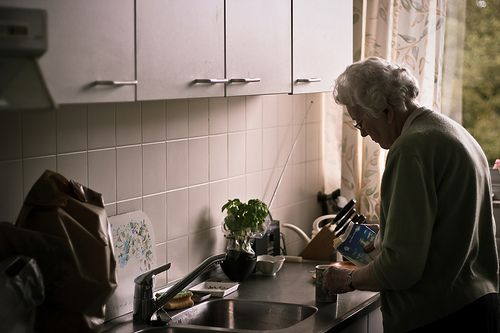As the aging population grows, the importance of designing senior-friendly homes becomes increasingly evident. These homes aren’t just spaces for living; they are sanctuaries of comfort, safety, and independence. Let’s delve deeper into the key design considerations for each aspect mentioned earlier—plumbing, kitchen cabinets, bathroom vanities, handrails, and flooring—to understand how they contribute to a senior-friendly living environment.
Plumbing
When considering a home plumbing system for a senior-friendly home, it’s crucial to address the specific needs of aging individuals. One of the most straightforward yet impactful changes is the installation of lever-handle faucets. These faucets require minimal effort to turn on and off, making them ideal for seniors with limited hand strength or dexterity. Lever handles promote independence and reduce frustration in daily tasks like washing hands or doing dishes.
In the bathroom, adjustable showerheads provide a customizable showering experience. Seniors can lower the showerhead to sit comfortably on a shower chair or raise it for a standing shower. This adaptability minimizes the risk of slips and falls in the shower, ensuring a safer bathing experience.
Kitchen Cabinets
Kitchen cabinets play a central role in daily life, but accessing items can be challenging for seniors, especially if cabinets are too high or too deep. To alleviate these challenges, consider lowering the height of base cabinets. This simple adjustment brings frequently used items within easy reach, reducing the need to strain or overextend.
Pull-out shelves are another valuable addition to kitchen cabinets. These shelves improve visibility and access to items at the back of the cabinet, eliminating the need to reach deep into cabinets, which can be difficult for seniors with mobility issues. The result is a more organized and user-friendly kitchen space. Ensure you contact a certified kitchen maker for better results.
Bathroom Vanities
Bathroom vanities are a focal point of daily routines, and ensuring they are senior-friendly is essential. Start by installing an accessible sink and countertop. Providing ample space beneath the sink accommodates wheelchairs and walkers, making it easier for seniors to maintain their personal hygiene independently.
Grab bars near the bathroom vanity area offer crucial support. These bars provide stability and assistance when seniors transition between sitting and standing positions or need support while using the sink. Properly positioned grab bars can prevent accidents and instill confidence.
Good lighting in the bathroom is more than an aesthetic choice; it’s a safety feature. Adequate illumination reduces the risk of slips and falls by enhancing visibility. Consider incorporating motion-activated lights to ensure seniors are never left in the dark during nighttime bathroom visits.
Handrails
Handrails play a vital role in maintaining stability and balance throughout the home. Staircases can be particularly challenging for seniors, so sturdy handrails on both sides of the stairs are essential. These handrails provide crucial support, reducing the risk of falls and instilling confidence when navigating stairs.
In multilevel homes, ramps or elevators are game-changers. Ramps should be gently sloped and designed with attention to detail to ensure ease of use. Elevators offer seamless vertical mobility, eliminating the need to climb stairs altogether. These modifications drastically improve accessibility within the home.
Don’t overlook the importance of handrails in hallways. Narrow passages can be challenging to navigate, especially for seniors using mobility aids. Installing handrails along hallways provides extra support, making movement between rooms safer and more comfortable.
Flooring
Flooring choices impact safety and comfort throughout the home. Non-slip flooring, such as textured tiles or slip-resistant coatings, is essential in areas prone to moisture, like the kitchen and bathroom. These surfaces reduce the risk of slipping and add an extra layer of safety.
Smooth transitions between different flooring surfaces are crucial to prevent tripping hazards. Whether transitioning from carpet to hardwood or tile to carpet, ensure that the changes are flush and secure. This is particularly important for seniors using mobility aids, as uneven transitions can lead to accidents.
For homes with carpeted areas, opt for low-pile carpeting. High-pile carpets can be challenging to traverse with mobility aids like walkers or wheelchairs. Low-pile carpets are easier to navigate and provide better support.
Conclusion
Designing a senior-friendly home involves thoughtful consideration of the specific needs and challenges of aging. By addressing plumbing, kitchen cabinets, bathroom vanities, handrails, and flooring, you can create an environment that not only enhances accessibility but also fosters independence and safety.
These modifications promote a higher quality of life for seniors and offer them and their loved ones peace of mind. Ultimately, a senior-friendly home becomes a haven of comfort and security, allowing seniors to age gracefully and confidently in the place they call home.
